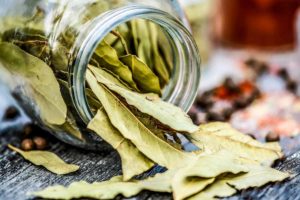Names: Ackee, Ackée, Akee, Akée, Aki, Akí, Anjye, Arbre Fricasse, Arbre à Fricassée, Blighia sapida, Cupania sapida, Daki, Ishin, Jakí, Kaha, Ris de Veau, Seso Vegetal.
***Do you know this plant by any other names? We want to know! Drop your location and lingo in the comments!
Botanical Family: Soapberry aka Sapindaceae Family
Parts Used: Leaves, Seeds, and Fruit
Preparations: The leaves are commonly used in herbal teas and the seeds are used to make soaps in West Africa, while the fruit meat is boiled and prepared with salted fish in Jamaica.
Harvest In: January to March & June to August
Home: This evergreen is native to Guinea, West Africa but now abundant in the Caribbean islands. So much so that it has been named the infamous national fruit of Jamaica.
Personality & Indications: An evergreen tree growing from 8-15 meter tall, you can recognize it by the orange pods hanging from it’s branches. These ackee pods remind me of smaller versions of cacao pods, though they are also described as pear shaped fruits. Different from both of those fruits, ackee bursts open to reveal the edible arili jutting out of the thick red skin like a finger tipped with shiny black nails. The arilli is a very light yellow that turns a vibrant gold when boiled. One could say Ackee really shows its best self when some heat is added to the picture. The sun makes it smile, the water makes it shine yellow, and a fever makes it go to healing work!

Other indications you might need to be using Ackee medicinally consist of constipation, fever, high blood pressure, poor heart health and blood circulation, protein deficiency, weakened immune system, headache, common cold, physical aches and pain, and finally a chronic yearning for a tasty Caribbean meal
Cultural & Historical Background:
“Mi fader sent mi to pick out a wife; tell me to tek those that smile, fe those that do not smile will kill mi”
-Beckwith 1929:44
The wife being spoken about in this Jamaican riddle is obviously the ackee. If consumed before it smiles at you to expose it’s shiny black teeth and sweet yellow gums, then you will suffer the consequences of severe illness that can lead to death. Every Jamaican surely knows this!
Though you have to be cautious with ackee, it is still considered the national fruit of Jamaica. So much so that Jamaica has nicknamed itself the “Big Ackee”, much like New York City has coined the “Big Apple” in its reference.

Now, you’re probably wondering how in the heck Ackee traveled all the way from West Africa to the Caribbean. It is believed that during the transatlantic slave trade, ackee amongst other agricuture was brought to be cropped on the stolen land. However, it wasn’t until a ship Captain named William Bligh, brought Ackee from Jamaica to London, that it was recognized in science.
FUN FACT: William Bligh also brought Breadfruit to Europe from Tahiti.
Our relationship: I had the honor of meeting Ackee in Jamaica during my second trip in the spring of 2021. A local chef, whom Venus Voyage now collaborates with, prepared it for me in the traditional breakfast manner. He even went as far as picking it from his mother’s ackee tree a few houses over.
As I continued my travels around Jamaica, I saw that Kingston’s harvest of ackee (and mangos) were far more abundant than any other part of the country. The fruit would fall off the trees, making a skirt for the body of the tree and easy pickin’ for a passerby like myself. In the states I could occasionally find an authentic ackee dish, thus far it’s been in Dallas, Texas (August 2020) and Los Angeles, California (September 2021). They tasted great both times but it is not to my knowledge whether it was canned or fresh ackee.
Warning/Disclaimer: Consult with your doctor and an herbal professional before using herbs or foreign agriculture internally. It is important that you innerstand your body, the product, and its effects on your body before using any herb. DO NOT pick unripe ackee, DO NOT force open the hull for ackee contains high levels of the toxin hypoglycin A, which disrupts blood glucose production and increases the risk of hypoglycemia. Left unchecked, hypoglycemia can lead to coma and even death. The FDA has banned ackee, thus why you (Americans) may not be familiar with this delicious fruit.
Bibilography:
https://jamaicans.com/how-much-do-you-know-about-ackee/
https://www.rmg.co.uk/stories/topics/william-bligh
https://www.jstor.org/stable/4256421
https://www.bbc.com/travel/article/20210315-ackee-and-saltfish-jamaicas-breakfast-of-champions
https://www.organicfacts.net/health-benefits/fruit/ackee.html




